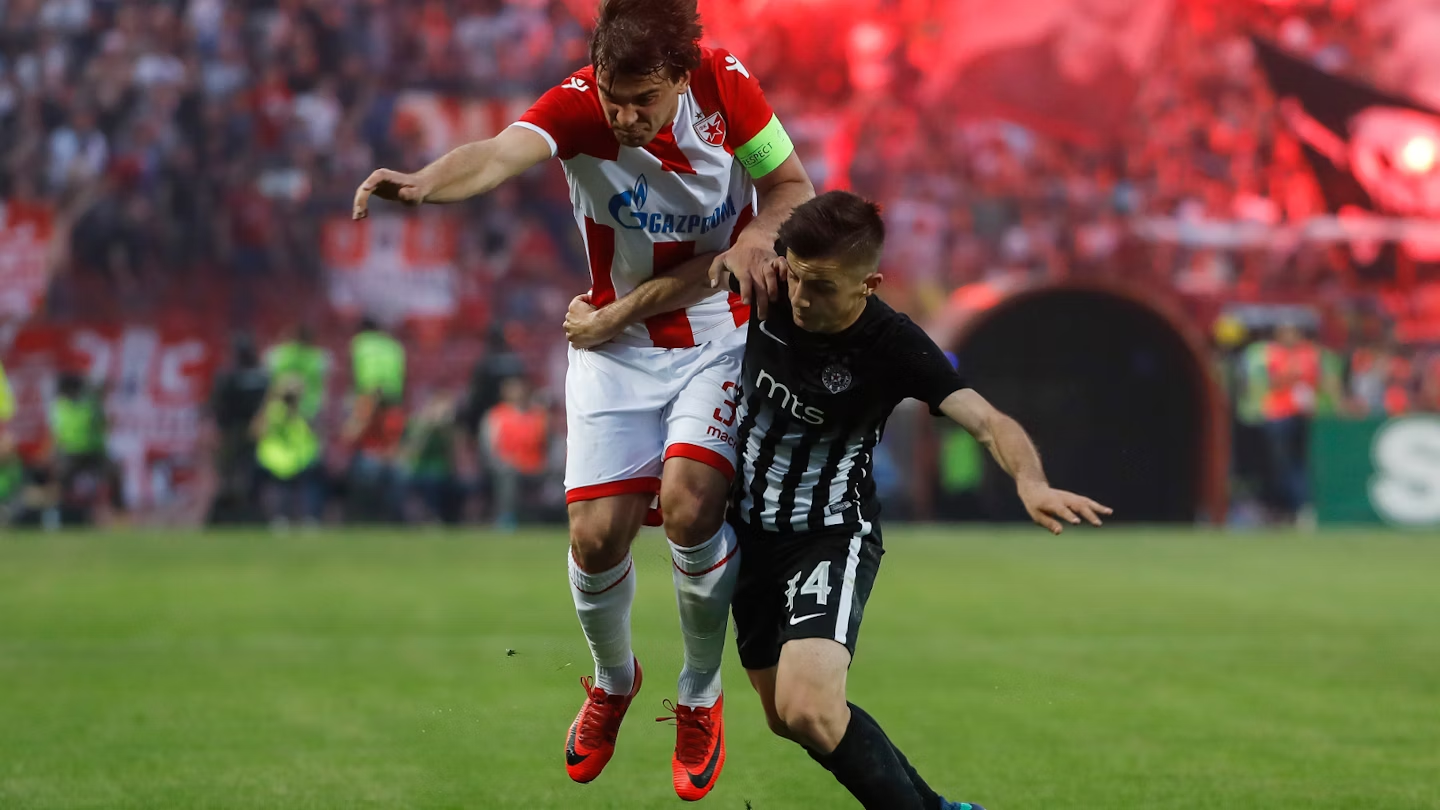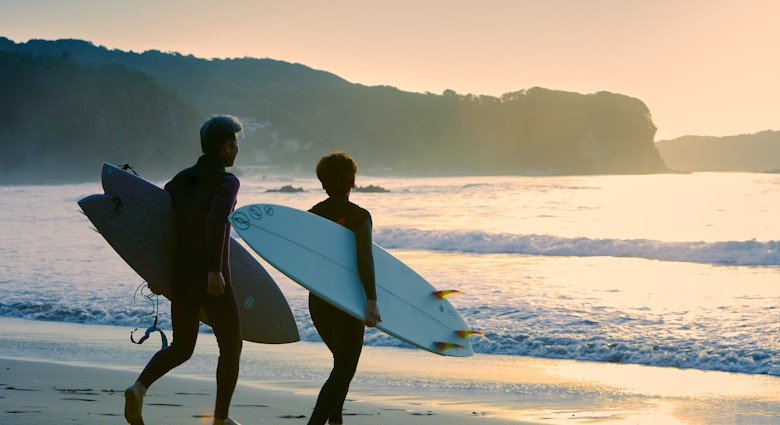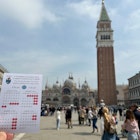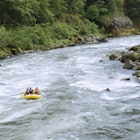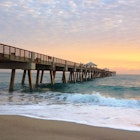Sport has been a major part of Belgraders’ identity ever since Yugoslavia came fourth at the inaugural football World Cup in Uruguay in 1930. Indeed, when explaining Serbia to foreigners, the locals almost invariably mention at least one star athlete from the past few decades, from tennis world number-one Novak Đoković to one-time Manchester United captain Nemanja Vidić, or NBA’s current and former stars Nikola Jokić and Vlade Divac.
This deep love of sports means that in Belgrade you can find people playing everything from American football to lacrosse, but the most popular sports in the country are football, basketball, tennis, water polo and volleyball, while running is becoming increasingly common. With many sports events held throughout the year (not to mention the passionate fans), Belgrade offers plenty of opportunities to experience and participate in Serbia’s vibrant sports culture.
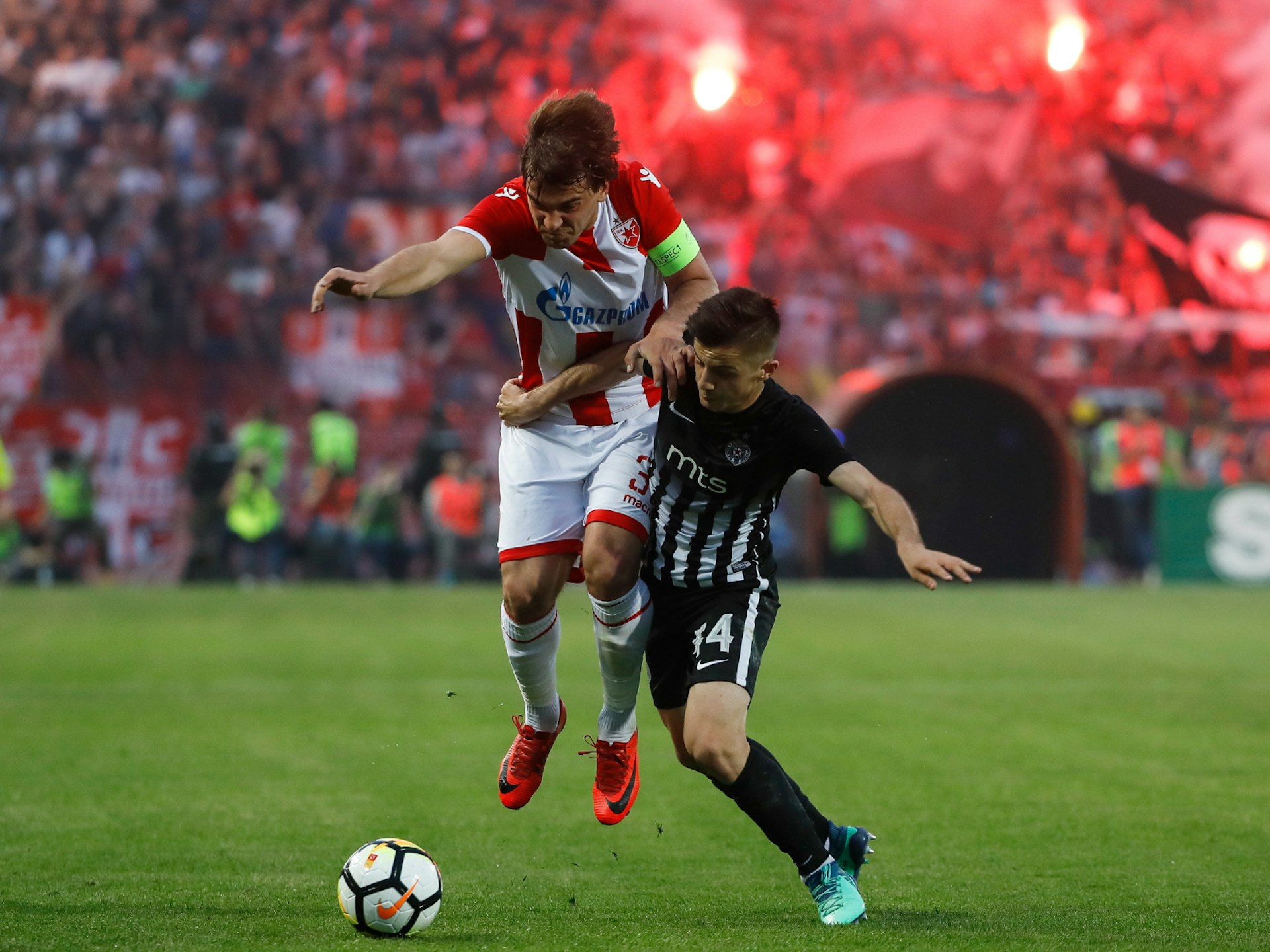
Experience the ‘Eternal Derby’
The two top football clubs in Belgrade are Crvena Zvezda (aka Red Star) and Partizan, whose bitter, legendary rivalry – dubbed the Eternal Derby – started with their foundation in 1945. Although arguably more famous globally for their diehard fans, both teams have achieved significant success throughout their history. In 1991, Red Star was officially the best team in the world when it won the Intercontinental Cup and the European Champions Cup (the precursor to the UEFA Champions League, to which it most recently qualified in the 2018–19 season). You can check out its many trophies in the museum attached to the club’s Marakana Stadium. Partizan, on the other hand, played in the first ever European Champions Cup match in 1955, came second in the same tournament in 1966 and was the first Serbian club to qualify for the UEFA Champions League in 2003–04.
Both clubs inspire fierce loyalty throughout Serbia and the wider Balkans region, and their regular games within the Serbian league are a visual treat for football fans, with massive pyrotechnic performances at the two stadiums (which are located a small distance from each other on Belgrade’s Topčider Hill). The tickets for the Eternal Derby can be bought a few weeks in advance at the stadium ticket booths and usually cost between 5 and 15 euros. Casual fans should consider avoiding the southern and northern sides of the pitch, given that those are reserved for hardcore fans and occasionally erupt in hooliganism. To find out the dates for the matches, check out the Red Star and Partizan websites.
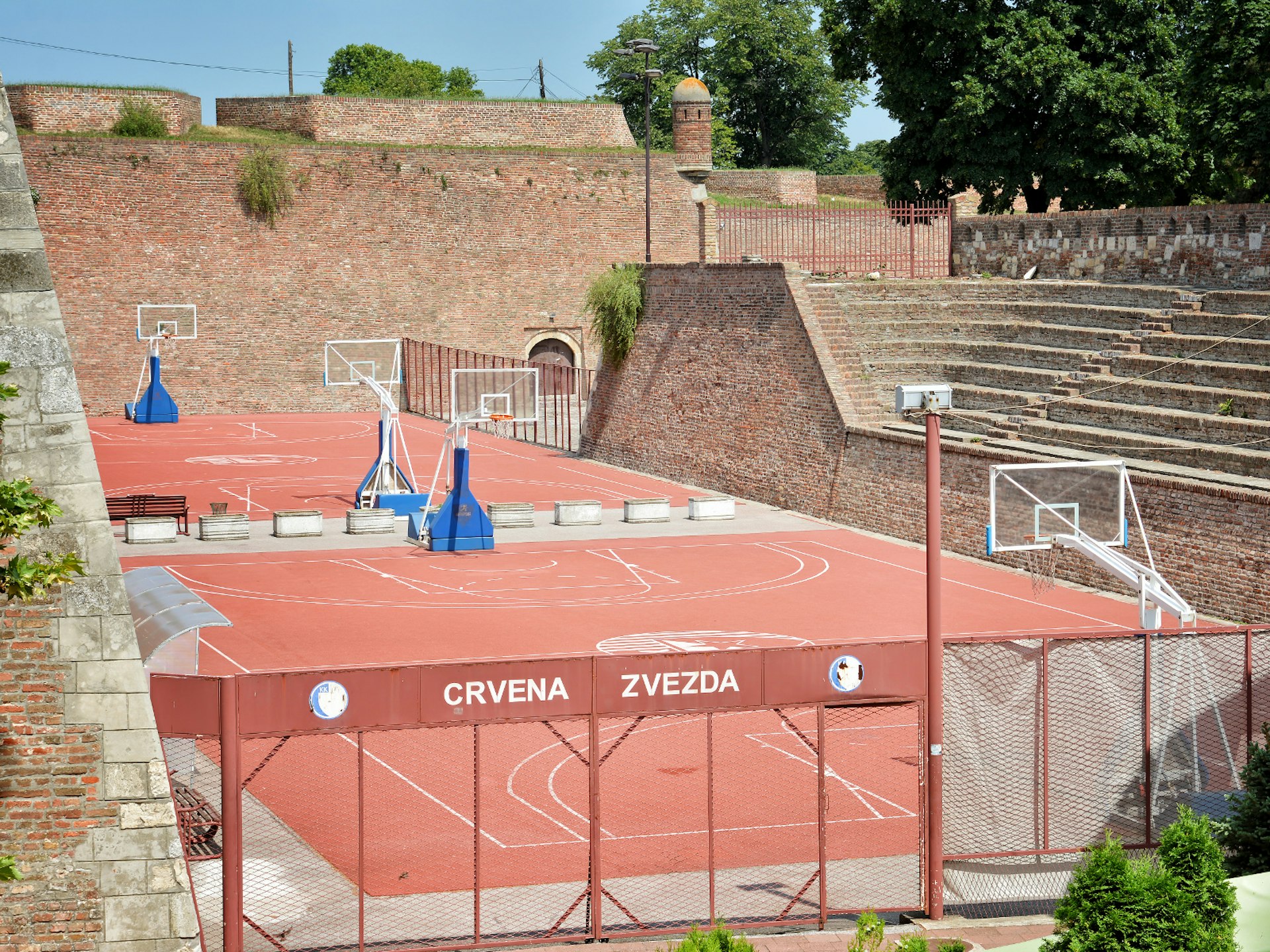
Feel the Serbian hoop hype
Given the average height of Serbians (1.82m), it’s not entirely surprising that the nation has had significant success in basketball. Since the breakup of Yugoslavia, the Serbian men’s team won the FIBA World Cup twice, and it boasts two Olympic silver medals (from Atlanta and Rio de Janeiro games). The country also regularly sends its best players into the NBA, and its top coaches lead major EuroLeague teams.
Belgrade’s premier basketball venue is Štark Arena, which opened in 2004 for the FIBA Diamond Ball and hosted the EuroBasket in 2005. However, it only hosts basketball games for major tournaments, such as the 2018 EuroLeague Final Four and the 2019 FIBA Women’s EuroBasket. National and club basketball games are more regularly played at Hala Pionir, where you can buy tickets a few days before a game.
If you’re more interested in shooting some hoops than just watching games, your best bet is to go to the basketball courts in Ada Ciganlija park, where on a nice day there’s always a crowd of basketball enthusiasts who would be happy to let you join a game.
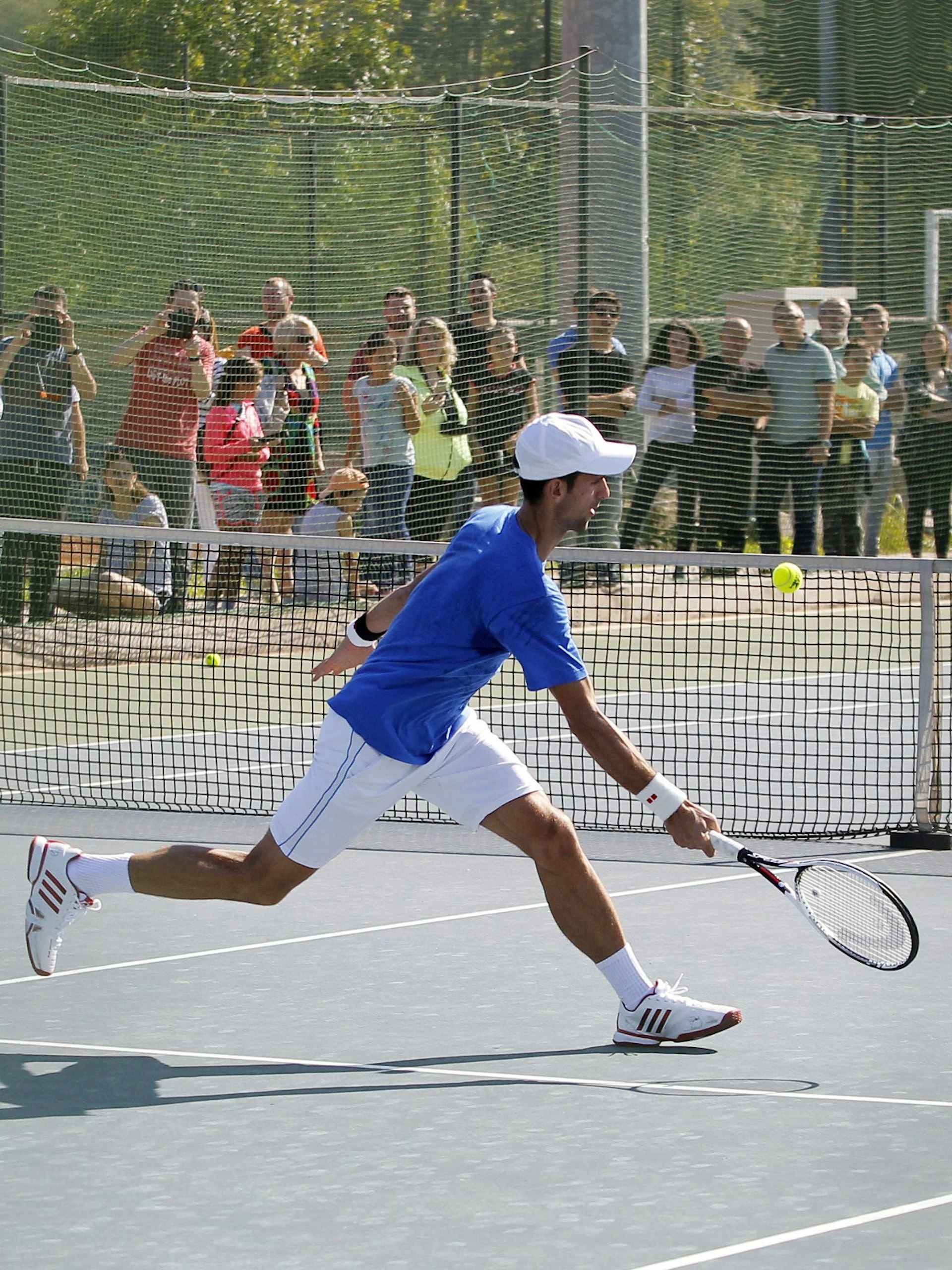
Play on Novak Đoković’s tennis courts
Although tennis has been played in Serbia since before WWII, it became a major sport in the country when a trio of young local players – Novak Đoković, Ana Ivanović and Jelena Janković – climbed to the top of the global rankings. Between 2009 and 2012 Belgrade even hosted the Serbia Open, an ATP World Tour 250 series men’s tennis tournament, at Novak Tennis Centre which is owned by Novak Đoković’s family. Although you’re unlikely to see ‘Nole’ playing there, you can still test yourself on one of the clay courts by the Danube or check out Novak’s trophy room, which exhibits some of his fantastic Grand Slam achievements.

Dip into the Balkan water-polo craze
Serbia is a global water-polo powerhouse, and the national men’s team is so beloved that two of its biggest former stars, Vanja Udovičić and Aleksandar Šapić, even successfully plunged into the country’s politics. After winning the Olympic gold in Rio de Janeiro in 2016, the Serbian men’s water-polo team became only the second ever to hold gold medals in all major international water-polo competitions in a single year – a feat previously achieved only by their arch-nemesis Hungary.
Although the national squad rarely plays in Belgrade, if you decide to take a dip at one of the city’s public swimming pools (including Tašmajdan, Banjica and 25 May) you’re likely to see young water-polo hopefuls training to reach local stardom. But if you’re set on watching a game, your best bet is to enquire on the spot about the upcoming matches of the city’s two clubs – Partizan (at Banjica) or Red Star (at 25 May) – and just show up, as the stands tend to be empty.
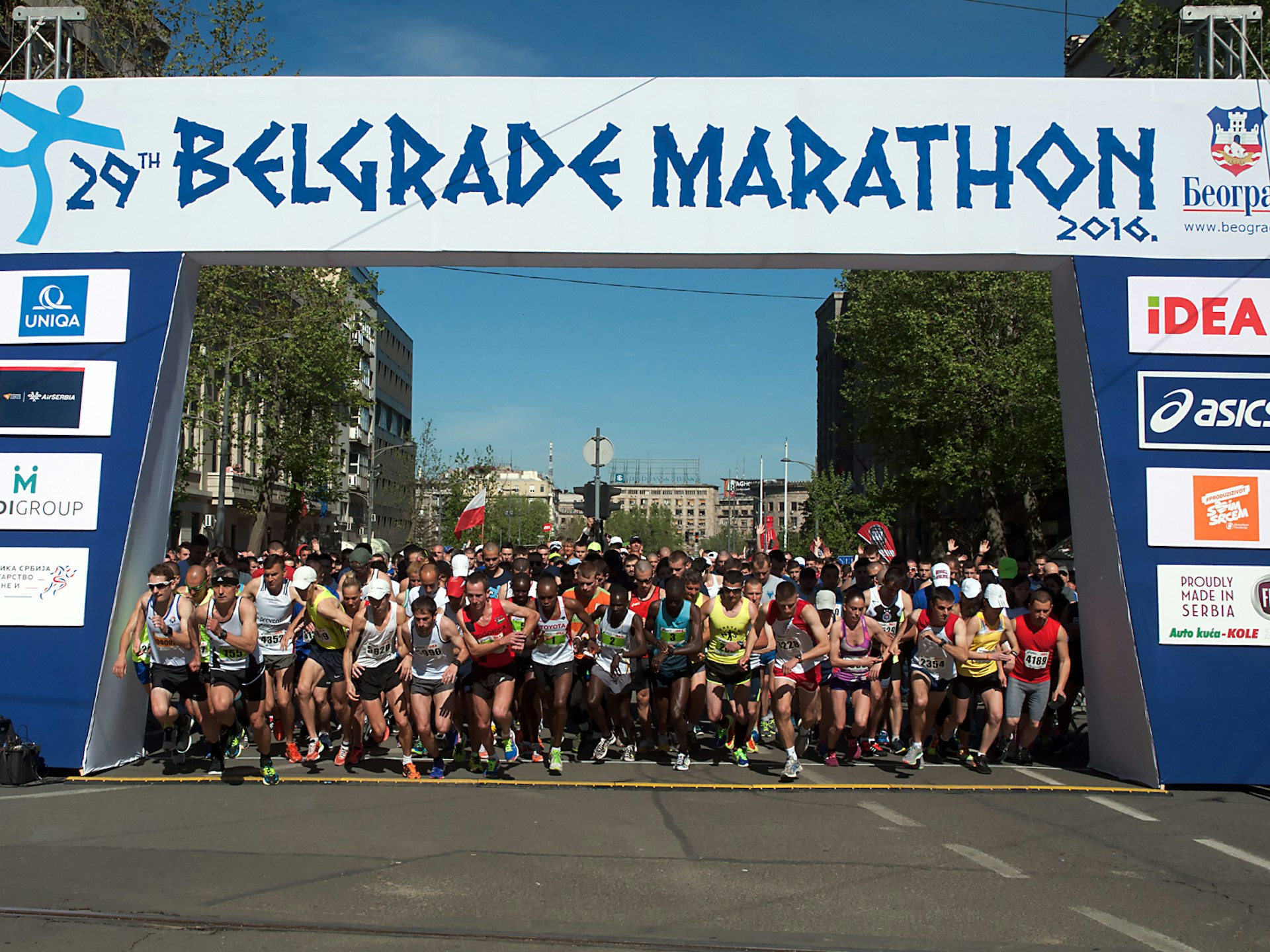
Hit the ground running in the Belgrade Marathon
By far the largest sporting event in Belgrade is the traditional marathon race which has taken place every April since 1988 – including the spring of 1999, when Belgrade was bombed by NATO during the Kosovo war. Beside the main race, there’s also a half-marathon race and a popular 5km ‘fun run’, which attracts tens of thousands of participants. The marathon and half-marathon courses traditionally start in front of the Sveti Marko Church and end on Terazije square, after taking the runners across the river through New Belgrade and past the city’s main sights. Given the increased popularity of long-distance running since 2017, there’s also the Belgrade Half-Marathon, which takes place in autumn. Both races are open to runners of all abilities and can be entered up until a few days before the race via the Belgrade Marathon website.
https://shop.lonelyplanet.com/products/eastern-europe-travel-guide-14
